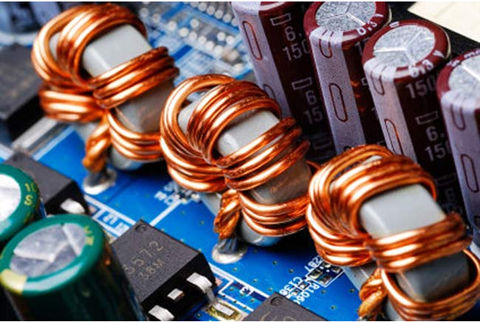Induction Motor
INDUCTION MOTOR
INDUCTION MOTOR CONSTRUCTION
An induction motor has the same physical stator as a synchronous machine, with a different rotor construction. It looks (and is) the same as a synchronous machine stator. There are two different types of induction motor rotors which can be placed inside the stator. One is called a cage rotor while the other is called a wound rotor.
THE EQUIVALENT CIRCUIT OF AN INDUCTION MOTOR
An induction motor relies for its operation on the induction of voltages and currents in its rotor circuit from the stator circuit (transformer action). Since the induction of voltages and currents in the rotor circuit of an induction motor is essentially a transformer operation, the equivalent circuit of an induction motor will turn out to (be very similar to the equivalent circuit of a transformer). An induction motor is called a singly excited machine (as opposed to a doubly excited synchronous machine), since power is supplied to only the stator circuit. Because an induction motor does not have an independent field circuit, its model will not contain an internal voltage source such as the internal generated voltage EA in a synchronous machine. It is possible to derive the equivalent circuit of an induction motor from a knowledge of transformers and from what we already know about the variation of rotor frequency with speed in induction motors.
Working Principle of Induction Motor
We need to give double excitation to make a DC motor rotate. In the DC motor, we give one supply to the stator and another to the rotor through brush arrangement. But in induction motors, we give only one supply, so it is interesting to know how an induction motor works. It is simple, from the name itself we can understand that here, the induction process is involved. When we give the supply to the stator winding, a magnetic flux gets produced in the stator due to the flow of current in the coil. The rotor winding is so arranged that each coil becomes short-circuited.
The flux from the stator cuts the short-circuited coil in the rotor. As the rotor coils are short-circuited, according to Faraday’s law of electromagnetic induction, the current will start flowing through the coil of the rotor. When the current through the rotor coils flows, another flux gets generated in the rotor. Now there are two fluxes, one is stator flux, and another is rotor flux. The rotor flux will be lagging in respect of the stator flux. Because of that, the rotor will feel a torque which will make the rotor rotate in the direction of the rotating magnetic field. This is the working principle of both single and three-phase induction motors.
Types of Induction Motors
The types of induction motors can be classified depending on whether they are a single phase or three-phase induction motor.
Single Phase Induction Motor
The types of single-phase induction motors include:
- Split Phase Induction Motor
- Capacitor Start Induction Motor
- Capacitor Start and Capacitor Run Induction Motor
- Shaded Pole Induction Motor
Three Phase Induction Motor
The types of three-phase induction motors include:
- Squirrel Cage Induction Motor
- Slip Ring Induction Motor
- The most important advantage of an induction motor is that its construction is quite simple in nature. The construction of the stator is similar in both synchronous motors as well as induction motors. However, a slip ring is required to feed DC supply to the rotor in the case of a synchronous generator. These slip rings are not required in a squirrel cage induction motor because the windings are permanently short-circuited. When compared with a DC motor, the induction motor does not have brushes and hence, maintenance required is quite low. This leads to a simple construction.
- The working of the motor is independent of the environmental condition. This is because the induction motor is robust and mechanically strong.
- A squirrel cage induction motor does not contain brushes, slip rings and commutators. Due to this reason, the cost of the motor is quite low. However, slip rings are used in wound type induction motors to add external resistance to the rotor winding.
- Due to the absence of brushes, there are no sparks in the motor. It can also be operated in hazardous conditions.
- Unlike synchronous motors, a 3 phase induction motor has a high starting torque, good speed regulation and reasonable overload capacity.
- An induction motor is a highly efficient machine with full load efficiency varying from 85 to 97 per cent.
Applications of Polyphase Wound Rotor Induction Motors
- Wound rotor motors are suitable for loads requiring high starting torque and where a lower starting current is required.
- The wound-rotor induction motors are also used for loads having high inertia, which results in higher energy losses.
- Used for the loads which require a gradual buildup of torque.
- Used for the loads that require speed control.
- The wound-rotor induction motors are used in conveyors, cranes, pumps, elevators and compressors.
- The maximum torque is above 200 per cent of the full load value while the full load slip may be as low as 3 per cent. The efficiency is about 90 %.

